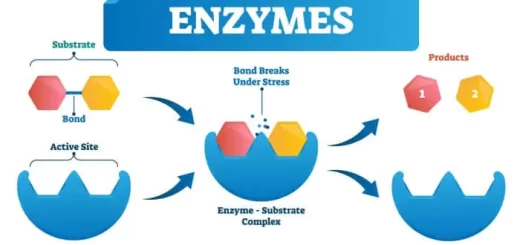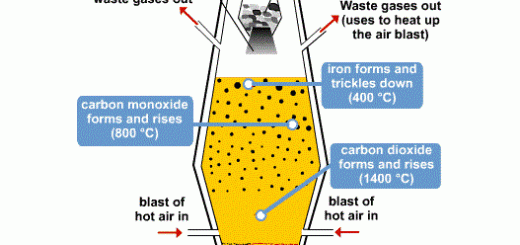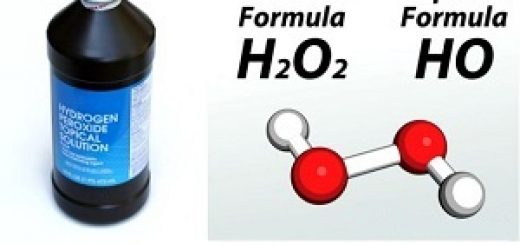Theories explaining the covalent bond, Octet rule and Overlapped orbitals concept
The concept of the covalent bond developed according to our knowledge of the electron properties, from the theories that explain the formation of the covalent bond are: The electronic theory of valency, The valence bond theory, and the molecular orbital theory.
The electronic theory of valency (octet rule 1916)
This theory was proposed by Lewis and Kosel, where they postulated that the covalent bond is formed when a number of electrons from the outermost shell of the two bonded atoms are shared between nuclei, consequently, the outermost shell of each atom contains eight electrons through the sharing of electron pairs.
Octet rule: With the exception of hydrogen, lithium & beryllium, the atoms of all elements tend to reach the octet structure of the nearest inert gas.
The inadequacies of octet rule
The bonding in many molecules can’t be explained based on the octet rule as in:
Phosphorus pentachloride molecule PCl5, Because the phosphorus atom is surrounded by ten electrons.
15P: [ 10Ne ], 3s², 3p3
17Cl: [ 10Ne ], 3s², 3p5
Boron trifluoride molecule BF3, Because the boron atom is surrounded by only six electrons.
5B: 1s², 3s², 2p1
9F: 1s², 2s², 2p5
The simple representation of the covalent bond as being just a shared pair of electrons is not sufficient to explain many of the properties of molecules such as the stereostructure and angles between bonds.
The valence bond theory (V.B.T)
This theory was based on the conclusions of quantum mechanics that consider the electron not only as a negative particle that moves in a definite orbit but as a material particle with wave property that can exist in any position in the space surrounding the nucleus.
This theory explains the formation of the covalent bond as a result of the overlap of an atomic orbital of one atom which contains a single electron with a similar orbital of another atom, The valence bond theory depends on two main concepts which are: Overlapped orbitals concept & Hybridized orbitals concept.
The valence bond theory: The covalent bond in the molecule results from the overlap of some atomic orbitals in the combined atoms and the rest of the atomic orbitals which didn’t take part in the formation of bonds remain as they were in the free atoms.
Overlapped orbitals concept
When two atoms come close to form a covalent bond, an atomic orbital of one atom – contains a single electron – overlaps with a similar orbital – contains a single electron – of another atom.
Application 1: The formation of hydrogen molecules according to the concept of the overlapped orbitals.
When the two hydrogen atoms come close to each other, an overlapping occurs between the 1s orbital (contains a single electron) of one atom with another 1s orbital (contains a single electron) of the other hydrogen atom to form hydrogen molecule H2.
Application 2: The formation of hydrogen fluoride according to the concept of the overlapped orbitals.
When the fluorine atom comes close to the hydrogen atom, one of the 2pz orbitals of the fluoride atom (which has a single electron) overlaps with the 1s orbital (which has a single electron) of the hydrogen atom to form hydrogen fluorine molecule HF.
The failure of the overlapped orbitals concept to explain the structure of methane molecule
It is clear from the electron configuration of carbon that the ground state of a carbon atom has only two electrons in a single state in a 2p orbital.
However, according to the overlapped orbital concept, the carbon atom is bonded with two hydrogen atoms by two covalent bonds from the type of (C − H), in this way, the formula of methane molecule is – postulated – CH2 and its bond angle equals 180°.
But, on studying the bonds in methane – actually – it is found that the carbon atom is bonded with four hydrogen atoms by four symmetrical bonds in length & strength and the molecule takes the tetrahedron shape and the angles between its bonds = 109.5°.
The valence bond theory explains the formation of four covalent bonds in methane molecule by the excitation process which takes place when the carbon atom acquires a given amount of energy, then one electron from the 2s orbital transfers to the vacant 2p orbital, Thereby, the carbon atom has four orbitals and each orbital contains a single electron, so, the carbon atom binding with 4 hydrogen atoms by 4 covalent bonds (C − H).
But another problem is shown, the non-equivalence of the four (C − H) bonds because the electron of the 2s orbital differs from the three electrons of the three 2p orbitals in energy and in the sterostructure of the orbitals, So, the valence bond theory couldn’t explain the structure of methane molecule in the light of the overlapped orbitals concept.
The hybridized orbitals concept
To solve the problem of the unsymmetry of the four orbitals in the excited carbon atom, there must be a further chance that occurs to the atomic orbitals in the carbon atom resulting in the formation of four equivalent orbitals known as hybridized orbitals, This process is termed by hybridization.
Hybridization is the process of the overlapping between two different orbitals or more of the same atom to produce a number of new equivalent orbitals called hybridized orbitals.
The conditions of the hybridization process:
- It occurs between orbitals of the same atom.
- It occurs between the orbitals of close energies such as (2s with 2p), (4s with 3d).
- The number of the hybridized orbitals = the number of pure orbitals undergoing hybridization with their symbols.
The hybridized orbitals are different in shape and more active than the pure orbitals, Because the hybridized orbitals are more protrusive to the outside, So, they are more capable of overlapping than the pure atomic orbitals.
Some of the hybridization type
The hybridization type is sp3: s orbital overlaps with three of p orbitals forming four hybridized orbitals, each of them is named sp3 hybrid orbital.
s + 3p → 4sp3 (hybridization)
The hybridization type is sp2: s orbital overlaps with two of p orbitals forming three hybridized orbitals, each of them is named sp2 hybrid orbital.
s + 2p → 3sp3 (hybridization)
The hybridization type is sp: s orbital overlaps with one of the p orbitals forming two hybridized orbitals, each of them is named sp hybrid orbital.
s + p → 2sp (hybridization)
The explanation of the structure of methane molecule using the hybridized orbitals concept
The excitation process takes place when the carbon atom acquires a given amount of energy, then the carbon atom is said to be excited, The four orbitals 2s, 2px, 2py and 2pz are hybridized forming four hybrid orbitals, where each of them is named sp3 and contains one single electron.
To overcome the repulsive forces between the orbitals, they are directed apart in space as far as possible till the angles between the hybrid orbitals become 109.5°, then they will be more stable (less repulsive).
The carbon atom binds with four hydrogen atoms by overlapping of the four sp3 hybridized orbitals of carbon atom with four 1s orbitals of the four hydrogen atoms, forming the four symmetrical covalent bonds (C − H) in length & strength, The molecule takes the tetrahedron shape with angles between the bonds = 109.5°.
The molecular orbital theory
The molecular orbital theory: The molecule is considered as one unit or a big atom with multi-nuclei in which all the atomic orbitals of the combined atoms are mixed or hybridized forming molecular orbitals, The molecular orbitals are symboled by sigma (σ), pi (π) and delta (δ).
The sigma bond (σ)
Sigma bond: The bond that is formed as a result of the overlap of two atomic orbitals along an axis by head to head, It is stronger than pi bond, The overlapped orbitals are on one line or collinear overlap.
The pi bond (π)
The pi bond (π): The bond that is formed as a result of the overlap of two atomic orbitals side by side, The overlap is between two parallel orbitals or collateral overlap.
Chemical combination, Types of bonds (Chemical bonds & Physical bonds)
Molecular orbital theory & Valence shell electron pair repulsion (VSEPR) theory
Chemical bonds, Ionic bonds, Properties & types of covalent bonds



